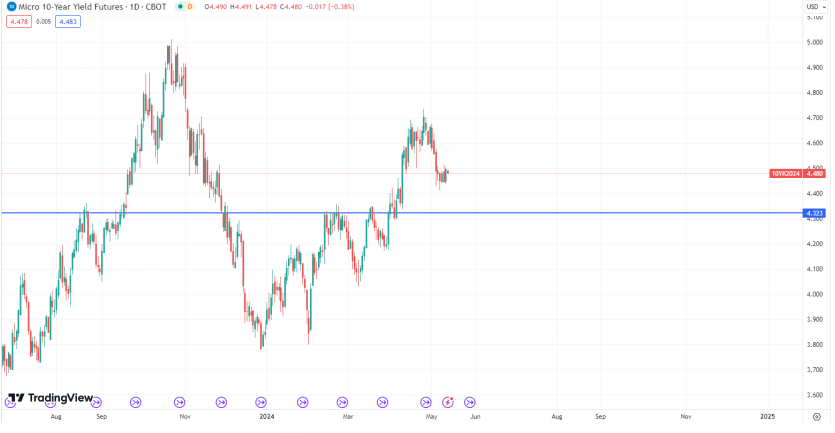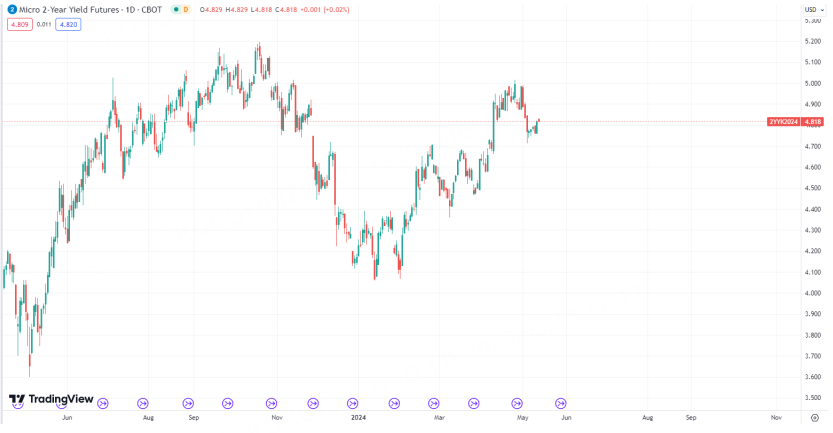Treasury Yield: What It Is and Factors That Affect It
With the update of the U.S. data again, the market has advanced the timing of the U.S. interest rate cut to a certain extent (for details, please refer to the content of last week's article), which also makes the U.S Treasury Yield out of the range-bound pattern as we expected. Although the price trend of bond yields has been determined, some investors are concerned about whether the 2-10-year spread convergence strategy is about to enter the tradable range.
The general trend is clear, and high resistance plays a role
The major premise of the yield expansion or convergence strategy itself lies in the change in the overall interest rate outlook: due to the relative certainty of the previous forward interest rate cut expectations, the inevitable result is that the rise in long-term bond yields cannot outperform short-term bond yields, and the decline is relatively low. More less resilient. The important factor for the change is the advance or strengthening of short-term interest rate cut expectations.
As we said before, since the clear interest rate head has appeared above the 5.25% range, the corresponding upward direction of U.S. bond yields will be blocked at the high level in the fourth quarter of last year. Taking the 10-year bond as an example, its clear resistance to selling high and buying low is 5.01, which also matches the high interest rate before the US subprime mortgage crisis in 2007/08. Although the price of 2-year bond yields is different, the time factor is basically the same. If we want to implement our one-leg strategy, we only need to choose the second high point of the rebound to short, and then set a new high stop loss. And the current trend is basically consistent with our guess: it is difficult to have more room for growth above 4.6.
There is no perfect price yet in the spread, but convergence may be the final option
Going back to the long-term and short-term bond yields, the current 2-year bond yield is 4.81, and the 10-year bond yield is 4.48. There is an inversion of 33 basis points between the two. Considering that inversion has become the new normal, we cannot simply rely on the logic of economic theory-the deposit rate for a longer period of time is greater than the short-term deposit rate for simple transactions. In fact, last year, the largest spread between long-term and short-term bond yields was around 80 BP. If we use this standard as a reference, the ideal entry point may require at least 50-60 BP to carry out the combination of long long-term yields and short-term yields (hedging strategy).
Of course, under the condition that the Fed expects to cut interest rates without reversal, it is inevitable that the price difference will remain at the current level or further narrow. It's just that from an actual trading point of view, we may need to wait more patiently for the price difference to expand slightly before implementing the convergence strategy.
Where is the target of this round of interest rate decline?
According to the short-term target of 75 basis points of interest rate cuts in the previous three times, we expect that the downward target of long-term and short-term bond yields this round will be near the low point in the first quarter of last year, which is the 3.25-3.5 range corresponding to the 10-year U.S. bond yield. If this level can be reached, at least short-covering operations need to be carried out. Whether it will reverse upwards, there is still not enough information and fundamental factors to judge.
In terms of operation, just remember the big idea of selling high and buying low in a large range. When there is a trading opportunity with a profit-loss ratio of 2: 1 or 3: 1, don't hesitate to enter the market decisively. If the price/performance ratio is average, it is recommended to watch more and move less.
$2-year US creditor company 2406 (ZTmain) $$SP500 Index Main 2406 (ESmain) $$Gold Main Company 2406 (GCmain) $$WTI Crude Oil Main Company 2406 (CLmain) $$SP500 Index Main 2406 (ESmain) $
Disclaimer: Investing carries risk. This is not financial advice. The above content should not be regarded as an offer, recommendation, or solicitation on acquiring or disposing of any financial products, any associated discussions, comments, or posts by author or other users should not be considered as such either. It is solely for general information purpose only, which does not consider your own investment objectives, financial situations or needs. TTM assumes no responsibility or warranty for the accuracy and completeness of the information, investors should do their own research and may seek professional advice before investing.



